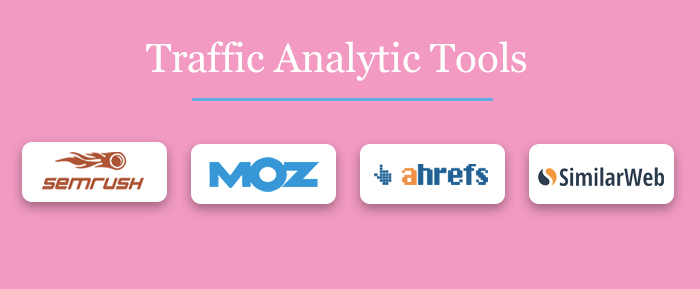In the ever-evolving digital landscape, user experience (UX) design holds the key to capturing and engaging users. As we step into 2023, data science emerges as a powerful ally for UX designers, providing valuable insights and enhancing the design process. By leveraging the power of data, designers can create more intuitive, personalized, and impactful experiences for users.
In this blog, we will explore the ways in which data science can elevate UX design in 2023. We will delve into the convergence of data and design, uncovering how data-driven approaches can lead to more informed decisions, improved user satisfaction, and ultimately, the creation of exceptional digital experiences.
According to Adobe, 38% of people will stop engaging with a website if its layout or content is visually unappealing. Join us as we dive into the realm of data science and its transformative potential for UX design in the year 2023.
How can data enhance a website?
Data can help design teams to create sites that are not only beautiful but functional and which trigger a clear response from the user, such as pushing the intended buttons leading to a purchase or filling in their e-mail address. A well-designed site gets visitors to stay longer, generates more shares, ultimately converting into more business. With the existing multitude of data sources, it is not difficult to gather insights about the clients’ preferences, but it is becoming challenging to navigate the ocean of information. The good news is that most of it is free, like Google Analytics.
How Can Data Enhance User Experience?
Utilizing data helps create fully-functioning web pages that help in making people click where we want. May it is making people push the button to buy or pulling them to put their email ID, data used in UX pays off. If more users abandon the page before filling their email addresses, it’s time to rethink if that step is necessary.
A perfectly designed site is intuitive and engages the user, encouraging them to spend more time on the website. The more time the user spends on the website, the higher the probability of converting into a potential customer.
With the booming BigData available to us, it’s no longer difficult to collect information about the clients’ likes and dislikes. However, navigating through the huge fields of information is difficult. Thanks to free tools such as Google Analytics that we don’t have to navigate manually.
1. Run Tests to Improve the Layout
Every item on the page can have a notable impact on conversions and ROI. A/B testing is the most traditional methods of user research. It involves dividing several variants of the people-groups and testing them within to optimize the best-performers. Though A/B testing is a good way to find effective results, its lack of intensity makes it less favorable.

Another popular way to collect vital information is to apply heat map analysis. Simply put, heat mapping uses several strategies to display user interaction with your website through a color-coded system, highlighting the areas that receive the most attention.
Paying close attention to the intensity of clicks at any particular place makes one understand the placement of the content & type of content that works. There are several types of heat maps.
2. Include a Search Box
Rule number one: Every website must have a search bar. A simple search element reaps multiple rewards. As well as being an efficient tool to help users find what they are looking for, a simple search box gives an insight into what type of content is attracting visitors.
By analyzing this information, necessary changes can be made to provide valuable content. This data can also be used to attract potential future clients. Also, searches that failed to return results provide a roadmap to create new content.
3. Customer segmentation
Web personalization is paramount to making visitors feel important, catered to and unique. By gathering the right information, the website can show adaptive messages, images or calls to action. Even as early as 2014, this approach was used successfully by some companies to connect better with their clients by filtering out unnecessary information and also triggering an emotional connection through well-chosen visuals.
Consultancy companies recommend employing customer segmentation techniques and unfolding specific strategies that help target the right group with the best message at the most convenient time.
This technique is also useful in re-targeting campaigns through e-mail or social media. Once a company has defined its target segments, the same logic can be applied to subsequent communication and a coherent strategy can be employed through multiple channels. For example, the same image that attracted certain groups of visitors can be re-used as a visual for a social media advertisement or inside a newsletter.
4. Acquisition and Traffic Analysis
Learning about your web traffic and the actions users are taking when they appear on your website can help one understand which applied strategies are worth it. It gives you a clear idea of the strategies you should dismiss. Pay attention to the entry points and exit pages. Evaluate the ROI from each acquisition channel. Boost the ones with positive results; Do the opposite otherwise.

Tools such as SEMrush, Moz, Ahrefs, Similarweb, etc. help you analyze the traffic of your site in comparison to competitors’. This comparison gives you a deeper insight into your rankings and helps you gather ideas to increase your organic traffic. Doing a thorough competitor analysis is the key, don’t let them slip away.
What UI/UX Designers Should Know?
As already mentioned, we don’t anticipate a downturn in these jobs. However, reshaping of attributions and workflows is a possibility. Therefore, even if you are a UX specialist or you have in-house UX designers, keep yourself/them educated about the usage of data in daily tasks.
Of course, one is not expected to be a data scientist or an analyst, but being aware of changes and the latest tools to incorporate within their daily processes can help. The upcoming UX professionals are expected to have a few coding skills and somewhat of data science knowledge so that they can design using data.
Data can for-sure improve web design if used with the right insights. The main focus remains to solve the client’s queries and accumulating data can do just that — providing relevant, real-time answers to the clients.
Overall, Data Science in UX designing has the power to provide better user experience with interactive design, automated responses, and better personalization. And a little bit of knowledge of including animations in the app can help the developer considerably.
Perspectives for web designers and web developers
We have already mentioned that we don’t foresee a downturn in these jobs, but instead a reshaping of attributions and workflows. Specialists should expect a rising need for continuous education for using data science in their daily tasks.
They are not expected to become data scientists or data analysts, but to be aware of the changes above and to be able to use tools that incorporate such results in their existing processes. There are some user-friendly options, starting with Google Analytics, Tableau, Avocode, and more. The next generation of web developers is expected to be a mix between coder and data scientist, being aware of both worlds.
Data can enhance web design as long as it is used for the right reasons. The primary focus should continue to be solving the client’s problems. Of course, data can enhance that by providing real-time answers, but it can’t replace a strategy. However, it has the power to improve design iteratively, automate some responses of the website and create a high degree of personalization.



